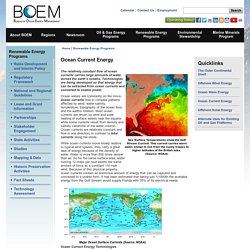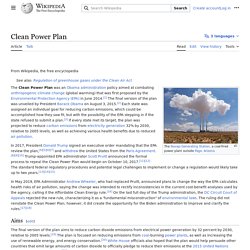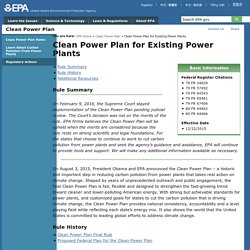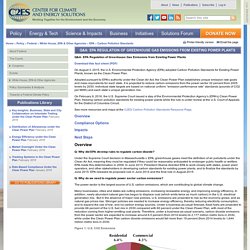

Ocean Current Energy. The relatively constant flow of ocean currents carries large amounts of water across the earth’s oceans.

Technologies are being developed so that energy that can be extracted from ocean currents and converted to usable power. Ocean waters are constantly on the move. Ocean currents flow in complex patterns affected by wind, water salinity, temperature, topography of the ocean floor, and the earth's rotation. Most ocean currents are driven by wind and solar heating of surface waters near the equator, while some currents result from density and salinity variations of the water column. Ocean currents are relatively constant and flow in one direction, in contrast to tidal currents along the shore. While ocean currents move slowly relative to typical wind speeds, they carry a great deal of energy because of the density of water. Ocean Current Energy Technologies There are a number of different current technology concepts under development.
Technical Challenges. Smart Energy Systems: 100% Renewable Energy at a National Level (Full Version) Bloom Box: The Alternative Energy that Terrifies Obama. LAGI FieldGuideRenewableEnergy ed1. ארגון עובדי המים - שיקום קרקע ומי תהום בישראל. איכות סביבה עלות השיקום של קרקעות מזוהמות בישראל מוערך בלמעלה מ- 8 מיליארדי שקלים.

הטכנולוגיות לשיקום, גם של מי התהום, קיימות ויש ליישם אותן בהקדם האפשרי כדי למנוע המשך התפשטות הזיהומים הקיימים רפי מנדלבאום* * מנכ"ל חברת LDD טכנולוגיות מתקדמות מאחר וטבעם של זיהומים קיימים להתפשט ולזהם קרקע ומי תהום מרוחקים ממקור הזיהום, העלויות לשיקום קרקע ומי תהום רק יגדלו אם הזיהומים הקיימים לא יטופלו בהקדם איחור ביישום הטכנולוגיות הקיימות גורם להמשך תנועה של כתמי הזיהום במי התהום, ויגרום להמשך זיהום מקורות מים נקיים בהיקפים הדומים להיקף ההתפלה המתוכנן במדינת ישראל. "עלות טיהור זיהומי הקרקע בישראל: 10 מיליארד שקל" - נדל"ן.
טיהור קרקע מזוהמת: הנעלמים שהמשרד לאיכות הסביבה שכח בדרך לפיתרון המשוואה. במשרד להגנת הסביבה כבר נערכים לקידום הטיפול בקרקעות מזוהמות: המשרד פרסם בשבועות האחרונים את טיוטת מדיניותו בנושא זה להערות הציבור, וזאת בטרם אושרה הצעת חוק מניעת זיהום קרקע וטיפול בקרקעות מזוהמות, התשע"א – 2011.

הצעת חוק זו נידונה רבות בכנסת ה-18 ויהיה ניתן יהיה לאשרה במושב זה מכיוון שחל עליה דין הרציפות. מדיניות זו מגלמת את נוהלי המשרד ואופן הפעולה בנושא קרקעות מזוהמות מול מחזיקים בקרקע, העוסקים בפעילות שיש בה סיכון לזיהום קרקע, ואלו אשר מחזיקים בקרקעות אשר באופן היסטורי בוצעה בהן פעילות בסיכון וכעת מעונינים לשנות יעוד במסגרת הליכי תכנון ובניה, לצורכי בנייה או לצרכים אחרים. נושא טיפול ושיקום קרקעות הועלה באופן נרחב גם בסטנדרטים ותקנים של בנייה ירוקה במתחמים אורבנים, באמצעות הענקת קרדיטציה לפרוייקטים מסוג זה. מדיניות זו, השואבת את כוחה מהצעת החוק הנ"ל, מעלה שאלות רבות אשר עדיין לא קבלו מענה ותלויות באופן הטמעת הנושא בגורמי הממשלה השונים ובהתנהגות שוק הנדל"ן בהתייחס לנושא הקרקעות המזוהמות.
לדוגמה מה יהיה ערך הקרקע באזור המיועד לטיפול קרקע לאחר מימוש פרויקטי טיפול בקרקע? מתחם תעש בשרון. Enviro-services.co. Clean Power Plan. United States energy plan from President Obama The Clean Power Plan was an Obama administration policy aimed at combating anthropogenic climate change (global warming) that was first proposed by the Environmental Protection Agency (EPA) in June 2014.[1] The final version of the plan was unveiled by President Obama on August 3, 2015.[2] The 460-page rule (RIN 2060–AR33) titled "Carbon Pollution Emission Guidelines for Existing Stationary Sources: Electric Utility Generating Units" was published in the Federal Register on October 23, 2015.[3] The Obama administration designed the plan to lower the carbon dioxide emitted by power generators.[4] The plan was widely expected to be eliminated under President Donald Trump,[5][6][7] who signed an executive order on March 28, 2017 mandating the EPA to review the plan.

On June 1, 2017, the United States withdrew from the Paris Agreement.[8][9][10] Aims[edit] Requirements[edit] Benefits[edit] Reduced CO2 emissions[edit] Health impact[edit] D.C. Clean Power Plan for Existing Power Plants. Clean Power Plan You are here: EPA Home » Clean Power Plan » Clean Power Plan for Existing Power Plants Rule Summary On February 9, 2016, the Supreme Court stayed implementation of the Clean Power Plan pending judicial review.

The Court’s decision was not on the merits of the rule. Clean Power Plan. FACT SHEET: Clean Power Plan Overview. Clean Power Plan You are here: EPA Home » Clean Power Plan » FACT SHEET: Clean Power Plan Overview On June 2, 2014, the U.S.

Environmental Protection Agency, under President Obama’s Climate Action Plan, proposed a commonsense plan to cut carbon pollution from power plants. The science shows that climate change is already posing risks to our health and our economy. Our climate is changing, and we’re feeling the dangerous and costly effects right now. Average temperatures have risen in most states since 1901, with seven of the top 10 warmest years on record occurring since 1998. Although there are limits at power plants for other pollutants like arsenic and mercury, there are currently no national limits on carbon. Children, the elderly, and the poor are most vulnerable to a range of climate-related health effects, including those related to heat stress, air pollution, extreme weather events, and others. States and businesses have already charted the path toward cleaner, more efficient power.
What is the Clean Power Plan? A Climate Game Changer. Power plants account for nearly 40 percent of U.S. carbon dioxide emissions.

That's more than every car, truck, and plane in the U.S. combined. On August 3, 2015, the Environmental Protection Agency (EPA) finalized new rules, or standards, that will reduce carbon emissions from power plants for the first time. Previously, power plants were allowed to dump unlimited amounts of carbon pollution into the atmosphere — no rules were in effect that limited their emissions of carbon dioxide, the primary driver of global warming. These standards, known as the Clean Power Plan, have been developed under the Clean Air Act, an act of Congress that requires the EPA to take steps to reduce air pollution that harms the public's health. These historic standards represent the most significant opportunity in years to help curb the growing consequences of climate change.
Q&A: EPA Regulation of Greenhouse Gas Emissions from Existing Power Plants. Q&A: EPA Regulation of Greenhouse Gas Emissions from Existing Power Plants Download this fact sheet (PDF) On August 3, 2015, the U.S.

Carbon Pollution Standards. The U.S.

Environmental Protection Agency (EPA) issued final rules in August 2015 to limit carbon pollution from existing and new power plants. Electric power generation accounts for 40 percent of U.S. carbon emissions, making it the largest source. Reducing power sector emissions is a key part of President Obama’s Climate Action Plan, which aims to reduce overall U.S. greenhouse gas emissions 17 percent below 2005 levels by 2020.
In addition, the U.S. contribution to the international climate agreement in Paris sets an economy-wide target of reducing greenhouse gas emissions by 26-28 percent below 2005 levels by 2025. Clean Power Plan for Existing Power Plants. Clean Power Plan You are here: EPA Home » Clean Power Plan » Clean Power Plan for Existing Power Plants Rule Summary On February 9, 2016, the Supreme Court stayed implementation of the Clean Power Plan pending judicial review.

The Court’s decision was not on the merits of the rule. Clean Power Plan. Clean power - The White House Search Results. President Obama is Taking Action on Climate Change www.whitehouse.gov/climate-change over 2 years ago - On Tuesday afternoon, President Obama will speak at Georgetown University and lay out his vision for the steps we need to take to prepare our country ... The Clean Power Plan: Myths and Facts | whitehouse.gov www.whitehouse.gov/blog/2015/08/03/clean-power-plan-myths-and-facts Myth: Carbon pollution standards will hit low-income communities the hardest. A Historic Commitment to Protecting the Environment and Reversing Climate Change.
Clean Power Plan. Clean Power Plan.